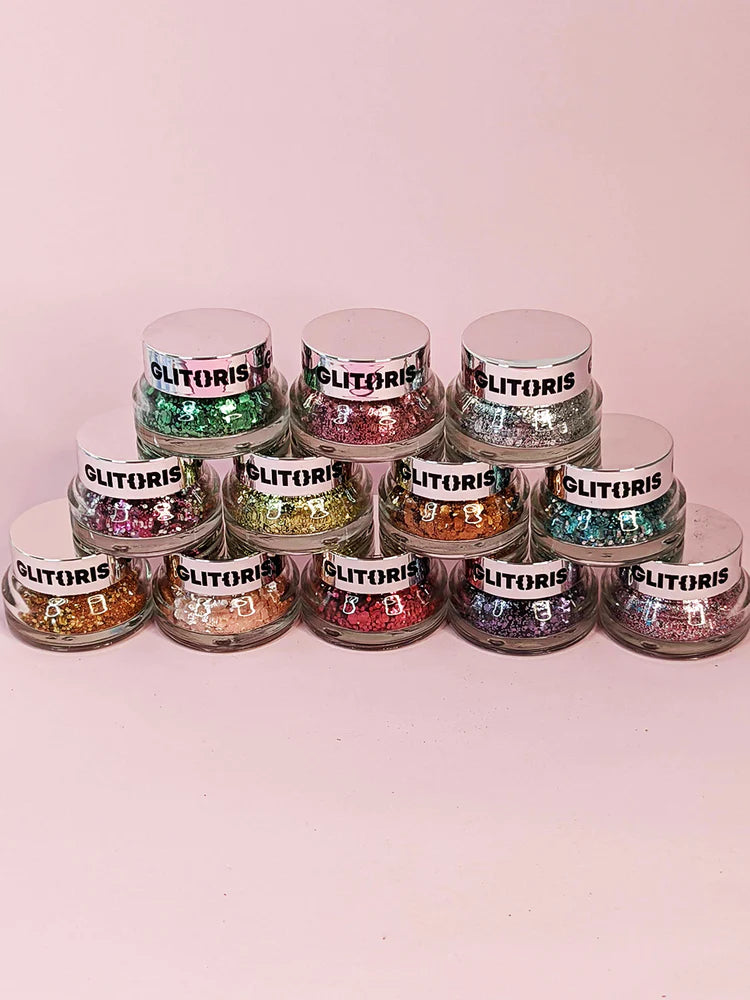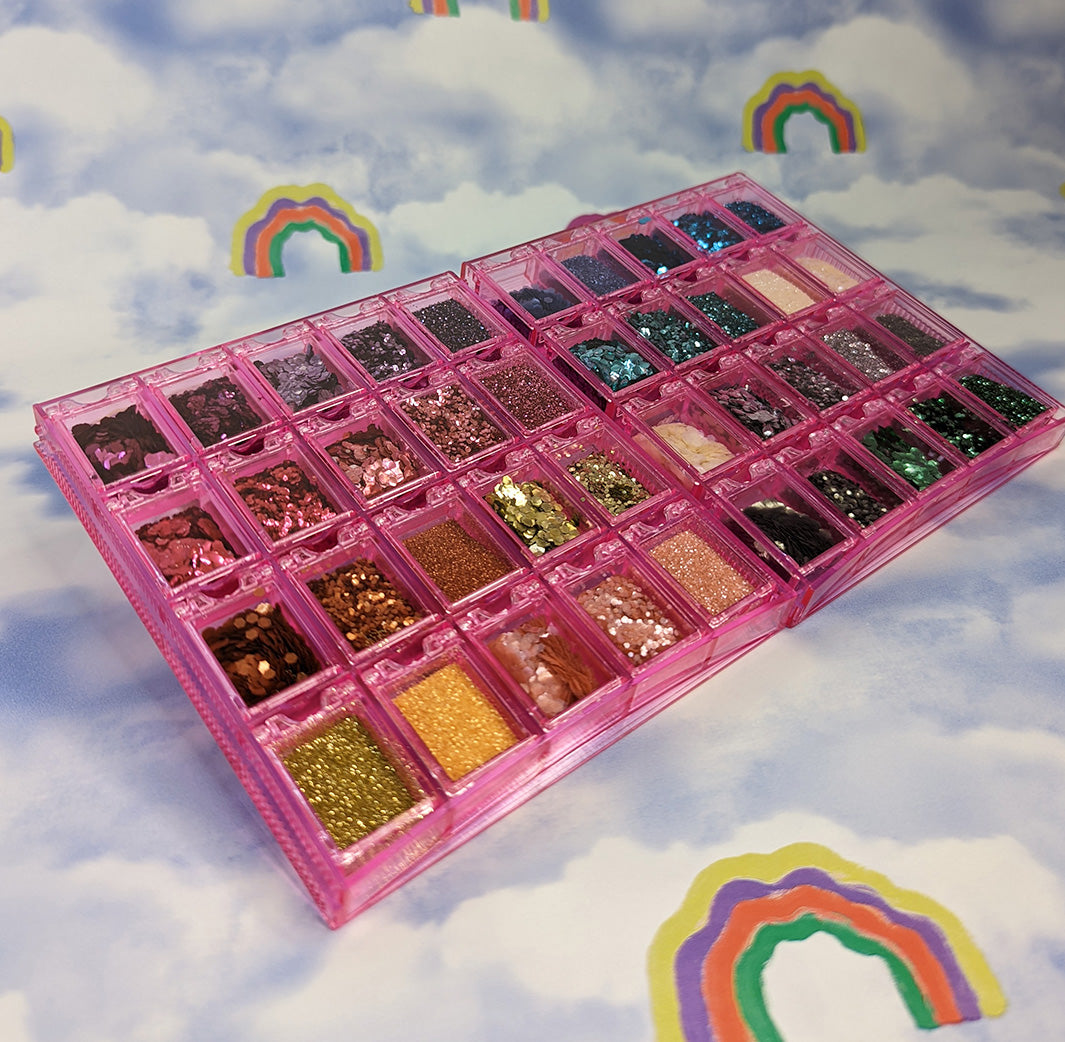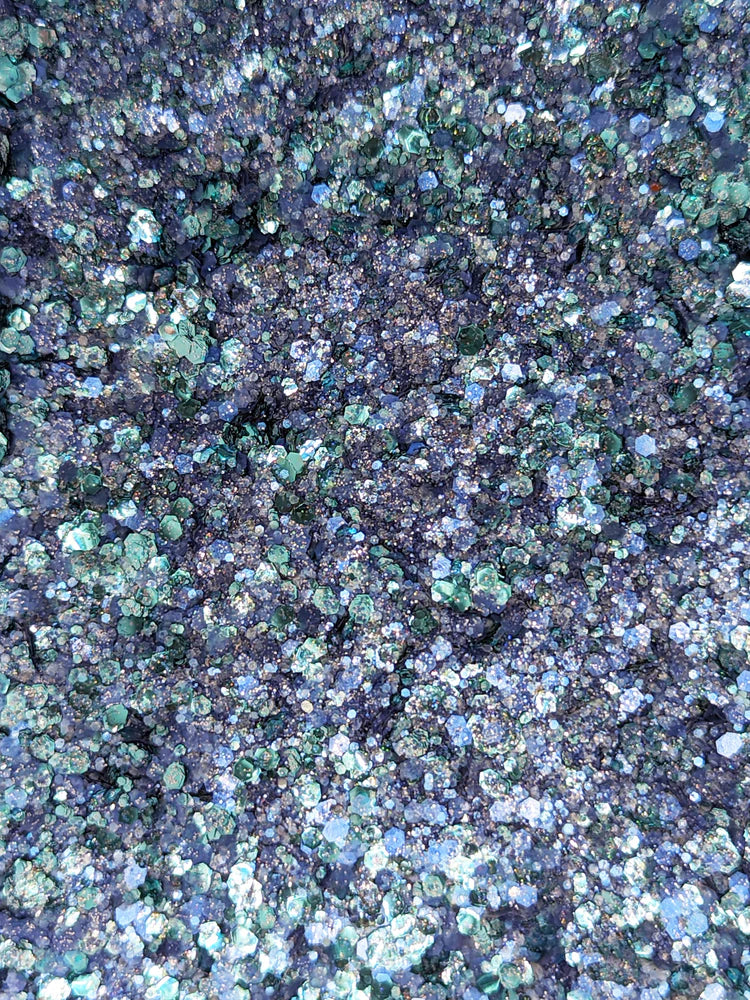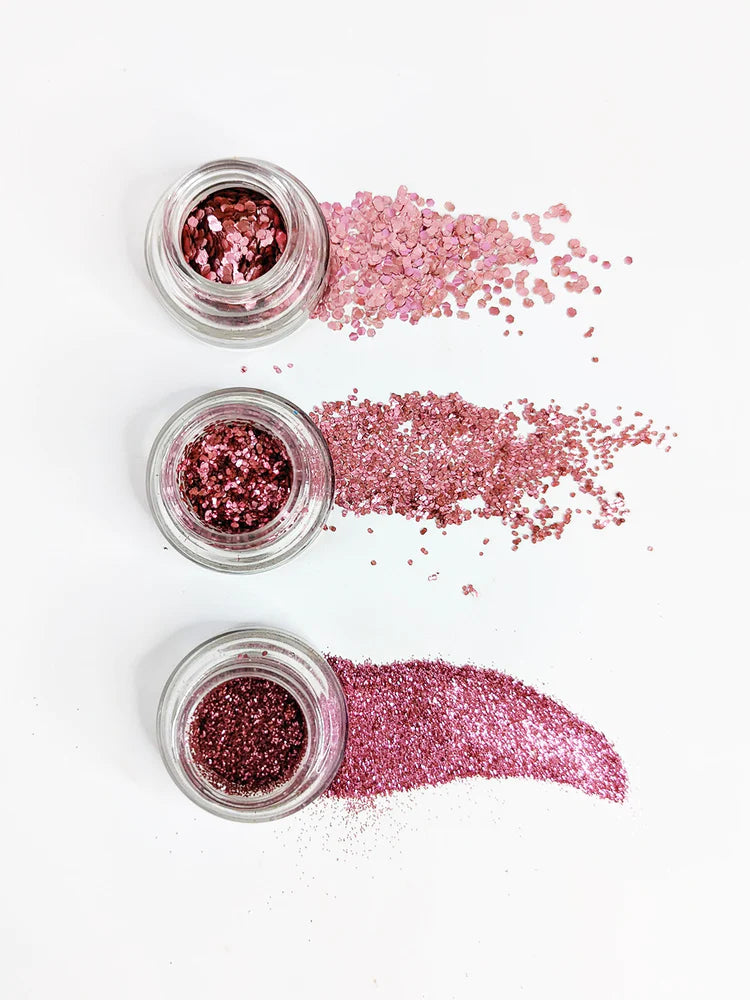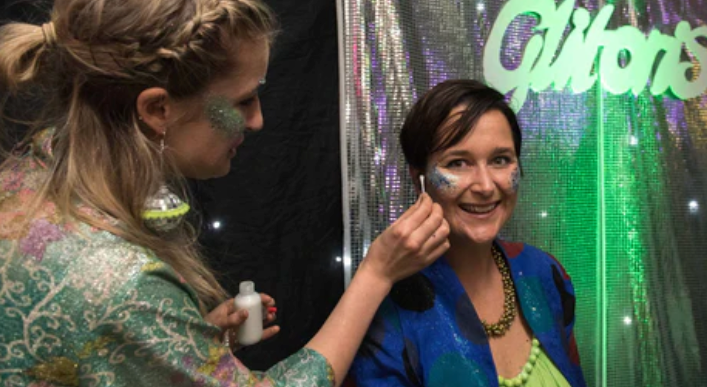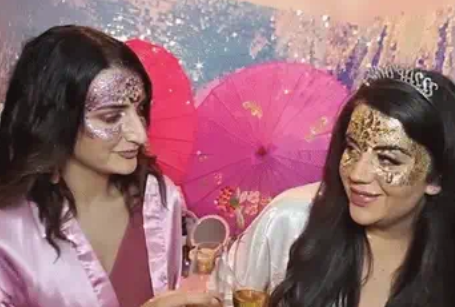Break it down. What is biodegradable glitter anyway?

Image: Glit thinking GIF by illustrator Ghostqia
What the heck is biodegradable glitter?
Okay let's just get this one out of the way.
Biodegradable glitter. You may have heard it be called eco glitter, bioglitter, compostable glitter and a host of other names… But biodegradable glitter is glit that can break down in a natural environment.
And if the name were an equation it would look a little something like this… (Thanks Google 😜)
✨ Glitter
+ 💩 Biodegradable
"The ability for a material to be broken down naturally by the organisms in an ecosystem. Simply put, biodegradable means that the material naturally breaks down into smaller components, such as sugars, water and gases (either completely or partially). The biodegradation occurs thanks to microorganisms, such as bacteria and fungi."
= Biodegradable glitter 💩✨

The definition is in the detail.
Sounds easy enough, right? But here is where it gets complicated… There are many different types of biodegradable glitter. Each variety has a different core material, additives, process for manufacture, optimal environment for breaking down, and will have achieved certain testing outcomes and certifications (or not).
So, technically if it “breaks down” a glitter can be considered as biodegradable, but doesn’t mean it should be. There are also a number of organisations that pass off untested biodegradable products, or generalise compostable and degradable products as “biodegradable”, “sustainable” or even “eco”, but in reality they are not. In recent years there has been heated debate over this greenwashing for many products in Australia. (And if there was one thing we would recommend reading on this debate it would be this by UNEP on marine litter, misconceptions and concerns.
It should also be said that anything that is a plant-based, animal-based or natural mineral-based product is usually labelled as “biodegradable.” However, each product will break down at different rates depending on the original material it's made out of and how much it has been processed.
And shouldn’t we be considering these things when naming a product as “biodegradable”? 👊

Not all cut from the same shiny film - the seven types.
Excluding a vast range of plastic glitters (yes, lots of companies try and pass off plastic based glitters as biodegradable. They are NOT! 🙅) there are seven main types of “sustainable” glitters: cellophane-based glitter, cellulose acetate glitter, modified regenerated cellulose, compostable glitter, PLA glitter, mica and synthetic mica. #Out-of-breath. 😮💨
Only a handful of these are TRUE biodegradable glitters. Here are the basic deets on each.
1. Cellophane-based glitter
First developed in the 1930’s, cellophane is a cellulose-based type of bioplastic made from a natural plant fibre. Although it sounds super sciencey 🔬, natural and sustainable… No manufacturer has managed to get it certified as “biodegradable.”
While technically it can break down over a LONG time, its chemical structure means it will not biodegrade in the natural environment. If you see the name cellophane or polymeric cellulose film on a cosmetic label run for the hills 🏃.
2. Cellulose acetate glitter
Cellulose acetate or cellulose triacetate is also more commonly known as acetate. Cellulose acetate is used to make everything from cigarette filters and spectacle frames.
It is made by reacting cellulose (plants) with acetic anhydride (a chemical compound with the formula (CH₃CO)₂O commonly abbreviated Ac₂O,) to produce a new substance called cellulose acetate.
While again, it is industrial and home compostable, it does not really biodegrade in the natural environment and is also a synthetic thermoplastic. It also takes 12 years to degrade. Enough said. 🙄

3. PLA glitter
PLA is a thermoplastic polyester bio-polymer. And if that description scrambles your brain a bit 🤯 - try this… It is produced by the chemical conversion of genetically modified corn 🌽 into dextrose. Then this dextrose is fermented to create lactic acid, which is then polymerised into polylactic acid, PLA for short. And if it's still scrambling… Corn is fermented and then combined. And if it's still scrambling... It's basically a type of plastic.
PLA glitter is then made from the polylactic acid and can only be broken down at SUPER HIGH temperatures and humidity. Again, it will only degrade in industrial applications, not your home compost nor nature.
4. Compostable glitter
Although it is always confused with biodegradable glitter, compostable glitter does not biodegrade in nature. The term “compostable glitter” is actually pretty misleading if you ask us.
While it can be recycled ♻️ , the materials that make this glitter will only break down under super specific temperatures, with a particular amount of pressure, and in the right bacteria environment. AKA only in your compost bin.
So say you get home at a quarter past rave, dive into bed 😴💤 and forget to shower until 24 hours later (classic)… All those party pieces will continue to part-tay 🕺🏽, polluting soil 💩, water💧 and the enviro until they find an optimal environment to decompose (a compost bin).
This category of glitters encompasses a couple of the different types of "eco-glitters" we list here. We included it because often, when a glitter has not been certified or can not be labeled as biodegradable often it can be deemed as "compostable". Basically another name for shitter-er-er glitter options. #Vomit

5. Mica
Mica is the name given to a naturally occurring mineral dust that gives sparkle 🌟 to products like cosmetics and cement. The shimmer effect is created when mica is coated with an oxide, most commonly titanium dioxide. Different colours and types are achieved by applying more coats of the chosen oxide or depending on how fine/coarse the material is.
There are 37 different groups of mica with different colours and levels of sheen, but the most commonly used types of mica worldwide are muscovite, biotite, and phlogopite.

Image: Mica mines in India with child labour.
Natural mineral makeup companies absolutely 💖 it… However, in recent years mica has copped some well deserved flack for the fact that many mica mines use child labour, is non-renewable and for its overall lack of sustainability. This has led brands like Lush to move away from mica and saw the birth of organisations like the Responsible Mica Initiative.
6. Synthetic mica
Despite being a man-made substance, synthetic mica is an environmentally-friendly alternative and was designed to mimic the effect of natural mica but is made in a lab.
If you want to get super techy then it's called Synthetic Fluorophlogopite. Synthetic Mica often has more vivid colours 🌈 and actually be brighter than naturally occurring mica. It's also softer.
Here is the real kicker - it will also biodegrade in a range of environments including marine environments. Different compounds will have a unique breakdown process and these are usually days not years until it will disappear from the enviro completely.
7. Modified regenerated cellulose
Finally, last but certainly not least is modified regenerated cellulose or (MRC). This stuff is a high-tech and modern version of traditional regenerated cellulose that is unique to Bioglitter™.
The base of this product is cellulose, a substance that makes up the bulk of a plant’s cell walls. Since it is made by all plants, it is probably the most abundant organic (carbon-containing) compound on Earth. Cellulose is a polysaccharide - a type of carbohydrate.
To make MRC natural cellulose is extracted from wood pulp, predominantly eucalyptus. Then the cellulose is regenerated by casting into a clear film called rayon. Then the outer is coated with either colour and/or metals and in some cases… a small amount of plastic.
Now, before you lose your nut over this idea, there are some products that are indeed 100% biodegradable in 90 days. We stock these. And there are some that are coated in a SUPER small percentage of plastics that are 97%+ biodegradable within 28 days. We also stock these. These forms of glitter have both tested and certified biodegradable internationally for a variety of land ecosystems and marine environments.
What is equally exciting is there are scientific innovations happening in this space like the creation of cellulose nanocrystals . Bring on the future 🔮.
So the biodegradable best??? The winners 🏆???
It probably comes as no surprise that synthetic mica and modern modified regenerated cellulose comes out on top.
If you want to learn more about how to choose the best biodegradable glitter and how to spot a fake you can read our handy dandy guide.
Okay just quickly though, what is Bioglitter™?
Dunno if you know but Bioglitter™ is actually a UK company Ronald Britton (now called Bioglitter™) who founded and trademarked Bioglitter™.
It is kind of like how most people call adhesive bandages 🩹 “Band Aids”, or calling all coolers “Eskies”, or artificial turf “AstroTurf” or even a stand-up personal watercraft a “Jet Ski”. It’s a brand name that has been used to rename an industry.
Aside from that, they are one of the world's only true manufacturers of biodegradable glitter. The org has been named as one of National Geographic’s top 4 innovations and has even been acknowledged by Sir David Attenborough for their work against plastic pollution.
We are so proud 🤗 to say that Bioglitter™ is Glitoris’ supplier and manufacturing partner.

Image: Letter from Sir David Attenborough acknowledging the work of Bioglitter™
So what about Glitoris biodegradable glitter?
Great question.
Our biodegradable glitter is made from plant cellulose from eucalyptus trees. It is biodegradable in all environments; certified industrial and home compostable, approved soil, wastewater, freshwater and marine biodegradable.
More than that, it is sustainably sourced from responsibly managed and certified plantations operating to PEFC™ standards. In its own right this product possesses some AWESOME eco-credentials. You can check all these out here.
Really, it is good to know… Glitoris bioglit is...
🐰 Cruelty-free. Tested on party people NOT furry friends.🌳 Made from plants, not plastic.
🌱 Ethically + sustainably sourced.
♻️ Certified home compostable + biodegradable.
👉 Feels oh-so-silky-soft to touch (compared to OG plastic glitter.)
🎓 Cosmetically compliant to the highest standards in Aus + globally.
🦋 Made from non-GMO ingredients.
🪙 Low in heavy metals.
👌 Refillable. Glit comes in a reusable glass jar.
🗑️ Free from single-use plastics.
✨ Magical.
💋 Easy AF to use.
How is Glitoris bioglit made?

Image: The six steps to making Glitoris bioglitter.
Step 1: The beautiful eucalyptus trees are grown and sustainably sourced from “nice” forests.
Step 2: This process is the complex one, but essentially the film is created by mashing up the pulp. When I think of this stage, I imagine an old newspaper press, with a super thin plastic like substance running through it. Kinda like a super thin and huge listerine strip. The result is a thin rayon.
Step 3: The coating is applied. This is the colour, the sheen, the fab-u-lous-ness.
Step 4: The glitter is cut. Now for cosmetic glitter it needs to be laser cut. I imagine 1000’s of Mission Impossible matrix-esq style lasers cutting glit shapes.
Step 5: The product is packaged up in our refillable jars and sustainable packaging.
Step 6: Party.
How does it break down?

Once the glitter enters the natural environment such as a compost bin, farmers field and through wastewater in our rivers or lakes it starts to break down as it gets eaten by microbes. These microbes will continue to consume the content turning it into dioxide, water and biomass. This breakdown process pretty much starts as soon as the bioglit enters this environment. Most will be completely gone within 90 days. 😵💫

Without the presence of microbes or bacteria biodegradable glitter doesn’t start to break down. Which is why if you drop it in a cup of water it won’t dissolve, or why it doesn't break down inside our glass jars. Microbes and bacteria need to be present.
But oh the biodegradable glitter naysayers.
I love a good balanced argument. I know there are people out there that are turned off by the idea of biodegradable glitter. Excluding ✨ sparklephobe ✨ from what I understand, most of the negative attention that biodegradable glitter receives is about the impact the product has for the days it is present in an environment.
There are unsubstantiated concerns about animal consumption, but there has only been one small study on the impact of any biodegradable glitter on a river environment and it didn’t look at a range of products or environments.
Without jumping to the category of being an absolute “science-denier” I will say that it feels logical that while any glitter is present in an environment it will have some impact on that environment for the time is there. We don’t really know how big or small this looks just yet.
If I had the money, I would fund the research. But alas I am just a small time conscious cosmetics owner. However, what I can do is recommend to all our users to dispose of their glitters at home, in their compost bin, where it makes the most sense. You can read more on this in our article on tips on how to remove your glitter without burning 🔥 the house down?
What we do know is that it is a far superior product to its plastic counterparts. Which brings me to a final question.
Why was biodegradable glitter even invented?
The biodegradable glitter movement was born by people that still want to party but that realised the world is facing a major issue with plastic pollution.

Despite cosmetics and indeed glitter being a super small part of the microplastic problem (I am looking at you fast fashion, paint flakes and tyre dust) it is still a contributor.
Glitter can find its way into wastewater from bathing, washing-up art materials or washing clothing. Following the water cycle, it can then end up in our lakes and rivers. Once in the natural environment, plastic glitter, like other microplastics, can cause physical harm to small organisms and end up entering the food chain.

Biodegradable is the first of its kind and sets the standard in eco-friendly 💚♻️ glitters. But this is just the beginning. We can't wait to break it down further.
Lots of love, Grace = founder + bo$$ biach of Glitoris.





